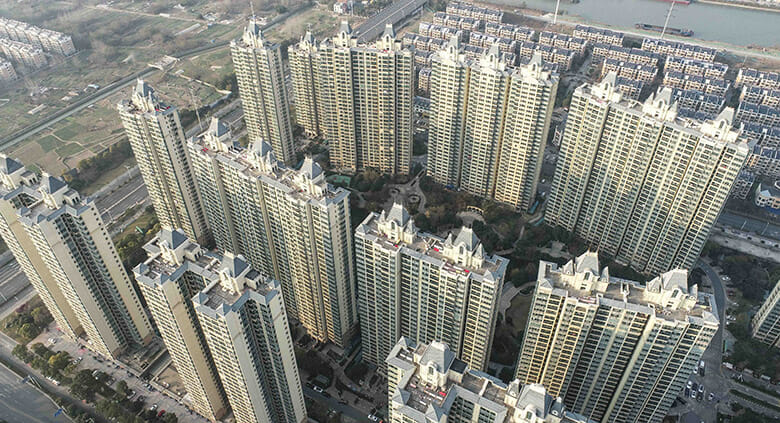
Chinese homebuyers may need more incentive before re-entering the market (Getty Images)
Home prices in China declined at their steepest pace in eight months during June, underscoring the policy challenges facing government leaders seeking to rekindle demand.
An index of new home prices in 70 major Chinese cities dropped 0.27 percent in June from a month earlier while second-hand home prices fell 0.61 percent over the same interval, according to an analysis by European bank ING based on official data released this past week. Prices of new and second-hand homes had fallen 0.2 percent and 0.5 percent month-on-month, respectively, in May.
Separate data released by the National Bureau of Statistics showed that the value of new homes sold by developers in the first six months of the year fell 5.2 percent compared to the same period in 2024, accelerating from a 2.8 percent decline in the January through May period. Sales by floor area were down 3.7 percent in the January through June period, widening from a 2.6 percent decline in the first five months of the year.
“It takes time for the property market to find its footing, and the fluctuation of relevant indicators are normal during this period of bottoming out and transition,” Sheng Laiyun, deputy commissioner of the NBS, said at a media briefing on the property market update. “This is why we need to step up efforts to stabilize the market and bring an end to its downward trend.”
Depreciation Dampens Sentiment
The continuous decline of second-hand home prices throughout the first half the year has undermined consumer confidence, noted Lynn Song, chief economist for Greater China at ING.

Lynn Song, chief economist for Greater China at ING
New home prices in 12 cities rose during the first six months of the year, with analysts linking the trend to a dropoff in new supply. However, prices of second-hand homes are down across the board, with 16 cities seeing declines of 3 percent or more so far this year, Song said, citing NBS data.
In June alone, new home prices rose in 14 cities including Shanghai, Changsha, Ningbo and Shenyang.
“This is not good news in terms of sentiment, as the secondary market represents the assets held by households,” said Song. “Given the prominent position of real estate in household balance sheets, it would be difficult to expect a turnaround in confidence as long as households’ biggest asset depreciates every month.”
Signs of a worsening property slump are raising expectations for further policy action, with Song saying that, “There is a growing possibility we’ll see more support measures roll out in the coming weeks or months.”
From Quantity to Quality
Following China’s a top-level urban planning meeting held last week, the first such gathering in a decade, the country’s top leaders pledged to pursue sustainable development, in contrast to the earlie
“Urbanisation in our country is evolving from a phase of rapid growth to one of stable development. Urban development is shifting from a stage of large-scale expansion to a stage focused on improving the quality and efficiency of inventories,” the official Xinhua news agency reported, citing the Central Urban Work Conference helmed by President Xi Jinping.
The country’s top leaders vowed that China would “steadily push forward” with the renewal of poor neighbourhoods and dilapidated homes, but did not specify any concrete steps to be taken immediately.
The attendees vowed to adopt a more “people-oriented” approach, with communities of all sizes to be developed in a coordinated way, Xinhua said, with an emphasis on sustainability and limits on supertall skyscrapers.
Goldman Sachs said in a report released last month that demand for new urban homes in China during the coming years will likely remain at 75 percent below the market’s 2017 peak, due to falling population, slowing urbanisation, and declining interest in property investment in light of falling prices.
The bank anticipates that China’s property slump could extend into 2027 with home prices falling another 10 percent.



Leave a Reply